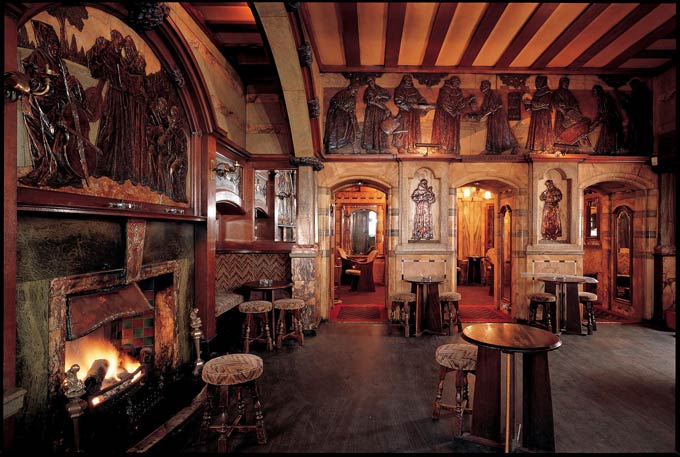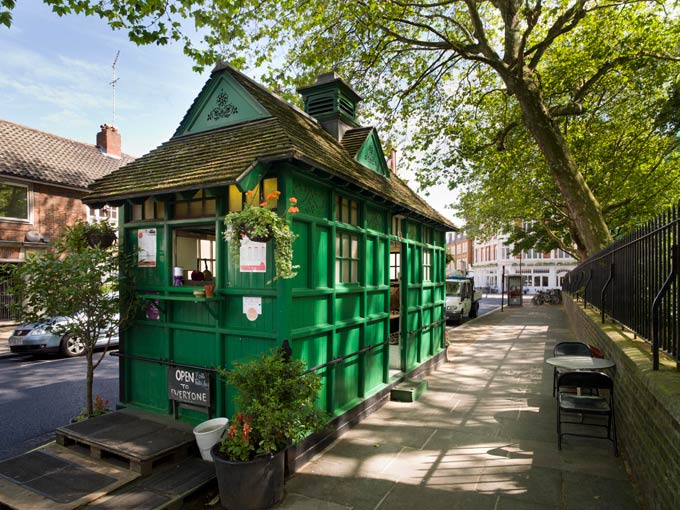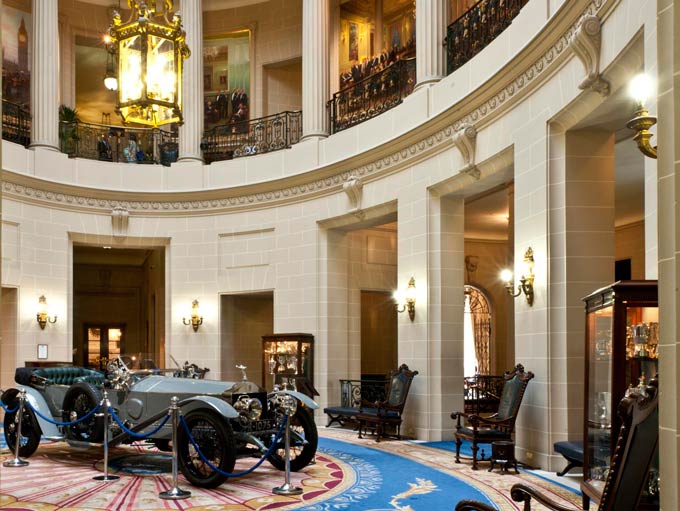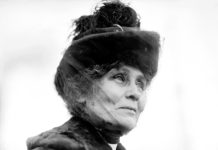We speak to Philip Davies, author of London: Hidden Interiors, and explore some of the capital’s hidden gems, from the grandeur of the Supreme Court to the less likely but just as impressive interior of The Black Friar pub

The Black Friar
Queen Victoria Street, EC4V 4EG
Built in 1875 near the site of a 13th-century priory, this wedge-shaped pub was saved from demolition in the 1960s, after a campaign lead by poet Sir John Betjeman, who was a great champion of Victorian architecture.
It’s no surprise that there was such strong opposition to the now-listed building being destroyed. “The late 1960s was a heroic era of conservation and a small number of campaigners could make a difference,” explains Philip Davies. “The reason The Black Friar is so important is partly because of the shape of the exterior, but it’s really the interior, which is this sort of extraordinary vision of ‘Merry England’, that is most impressive – the levity of it, amusing little vignettes within the building and the decoration.”
Adornments, such as the relief work of friars, are rendered using only the finest materials including marble and brass. Plenty of text is incorporated into the design: “There are friezes of certain mottos or little jokes like ‘finery is folly’ and ‘don’t advertise tell a gossip’,” says Davies. “None of it was intended to be very serious, it’s just an incredibly original and inventive interior, which gives a remarkable insight into late 19th-century England and, of course, it was designed as a pub as well.”

St Christopher’s Chapel
Great Ormond Street, WC1N 3JH
“This is my favourite,” says Davies of St Christopher’s Chapel, which is part of Great Ormond Street Hospital. “It’s the most beautiful, tiny chapel that is like a jewelled reliquary with fantastic Byzantine decorations, delicate carvings, gold mosaic and stencilling.”
The chapel was designed by EM Barry – the son of Sir Charles Barry, who designed the Houses of Parliament – with children specifically in mind, and unveiled in 1875.
“The pews are child-sized, which is a lovely touch,” says Davies. “A lot of the ornamentation is designed to appeal to children and to convey the Christian message through iconography and symbolism. It’s a poignant place because people go here during times of great stress when their children are extremely unwell.”
The imagery is largely dedicated to the relationship between Christ and children. On the north wall is the quotation “Suffer the little Children to come unto me”, beneath a mural of children gathered around Jesus.
Another thing that makes St Christopher’s so interesting is that when the area around it was developed, the chapel itself was moved on rollers into its current position without any of it being damaged. Anyone can still visit the chapel and it remains one of London’s most affecting interiors.

Cabmen’s Shelter
Wellington Place, NW8 7PD
Cabmen’s Shelters, with distinctive dark green painted timber and cedar shingles on their roofs, were established at the end of the 19th century by Sir George Armstrong, the editor of The Globe newspaper.
“The idea was to give cab drivers somewhere they could go and have a drink or something to eat during the working day,” explains Davies. “They were often restricted to where they could park their cabs so, prior to the shelters, they had to leave them and go to pubs and coach houses where they invariably emerged the worse for wear after too much alcohol. It was part of the temperance movement to give them these shelters with wholesome refreshments.”
There are 13 surviving Cabmen’s Shelters in London and all are still used by cab drivers. They have been restored by English Heritage and are all listed.
There might be minor differences between them – this one in Wellington Place is unique inside, having been decorated with contemporary murals of London black taxis – but around 12 people can fit comfortably within them, and each has a small kitchen.
“They are a quirky part of London’s history,” says Davies. “But they are still used for a purpose and in some cases the public can go in and ask for an egg and chips.”

The Supreme Court
Parliament square, SW1P 3BD
Housing the Supreme Court, which was established in 2005, in this neo-Gothic building of 1911-1913 (formerly Middlesex Guildhall) was a controversial decision.
“What they wanted to do as a Supreme Court was to make the legal process more transparent so that people could go in and see what was going on,” explains Davies. “There were certain basic requirements such as having a library, which would mean altering the building. But because the quality of the fitting inside was superb, Save Britain’s Heritage campaigned against it. It went ahead but there were difficult negotiations to ensure that it was a sensitive adaptation of the building.”
A number of the courtrooms retained the original fittings but with other areas and rooms that were modernised the superfluous primary features were set aside to be used at the crown court at Snaresbrook.
“Then the new interventions were carefully designed to work with the building rather than undermine its qualities,” says Davies. “There is a glass screen, for example, that replaces a solid wall in a hall that used to be very gloomy. It really opens it up and has improved the spacial cavity inside. The end results are a very impressive mixture of conservation and sensitive new development. That’s why it works so well; you can see the quality.”

The Royal Automobile Club
Pall Mall, SW1Y 5HS
The Automobile Club of Great Britain and Ireland was founded in 1897 by Frederick Richard Simms, and it became the Royal Automobile Club in 1907 under the patronage of Edward VII. It changed locations a few times, from Whitehall Court to Piccadilly, before establishing itself on the site of the old War Office at Cumberland House. The building cost £250,000, and a French team of craftsmen, sculptors and blacksmiths was specifically employed from across the Channel to give the exterior an authentic Parisian look.
The Club, which has both male and female members, is behind the introduction of the driving licence. The oldest motoring organisation in the country, it now has the reputation of being the country’s most influential.
“The Royal Automobile Club has one of the grandest club interiors in London, designed by Mewes and Davis, the architects of The Ritz,” says Davies. “The basement swimming pool is simply astonishing. It is like something from a Cecil B DeMille epic with Byzantine decoration and glistening mosaics all overlooked by a superb sculpture of a sea goddess by Gilbert Bayes. It is a wonderful expression of fin de siecle opulence from a hedonistic age.”
Utterly flamboyant with inspiration from Louis XIV, Italian palaces and Grecian antiquity, this Grade II listed building also boasts its own rifle range and Turkish baths, not to mention the central rotunda, which makes for the perfect place to feature a rotating classic or super car for visitors to admire from almost any angle.
London: Hidden Interiors This beautiful, weighty hardback by Philip Davies follows the author’s previous book, Panoramas of Lost London, which focused on the buildings that vanished from the capital between 1870 and 1945. “That was all quite mournful and regretful,” says Davies. “One of the narratives of the new book is that we need to learn lessons from the past. I wanted to create something that shows how much has survived but that it is hidden away – all of us walk past buildings every day without knowing that there are these wonderful interiors.” London: Hidden Interiors presents 180 places that showcase just how much rich, glorious heritage there is still left in the city. Published by Atlantic Publishing with English Heritage – price £40. Available from all good bookshops and www.londonhiddeninteriors.co.uk




 © 2024
© 2024